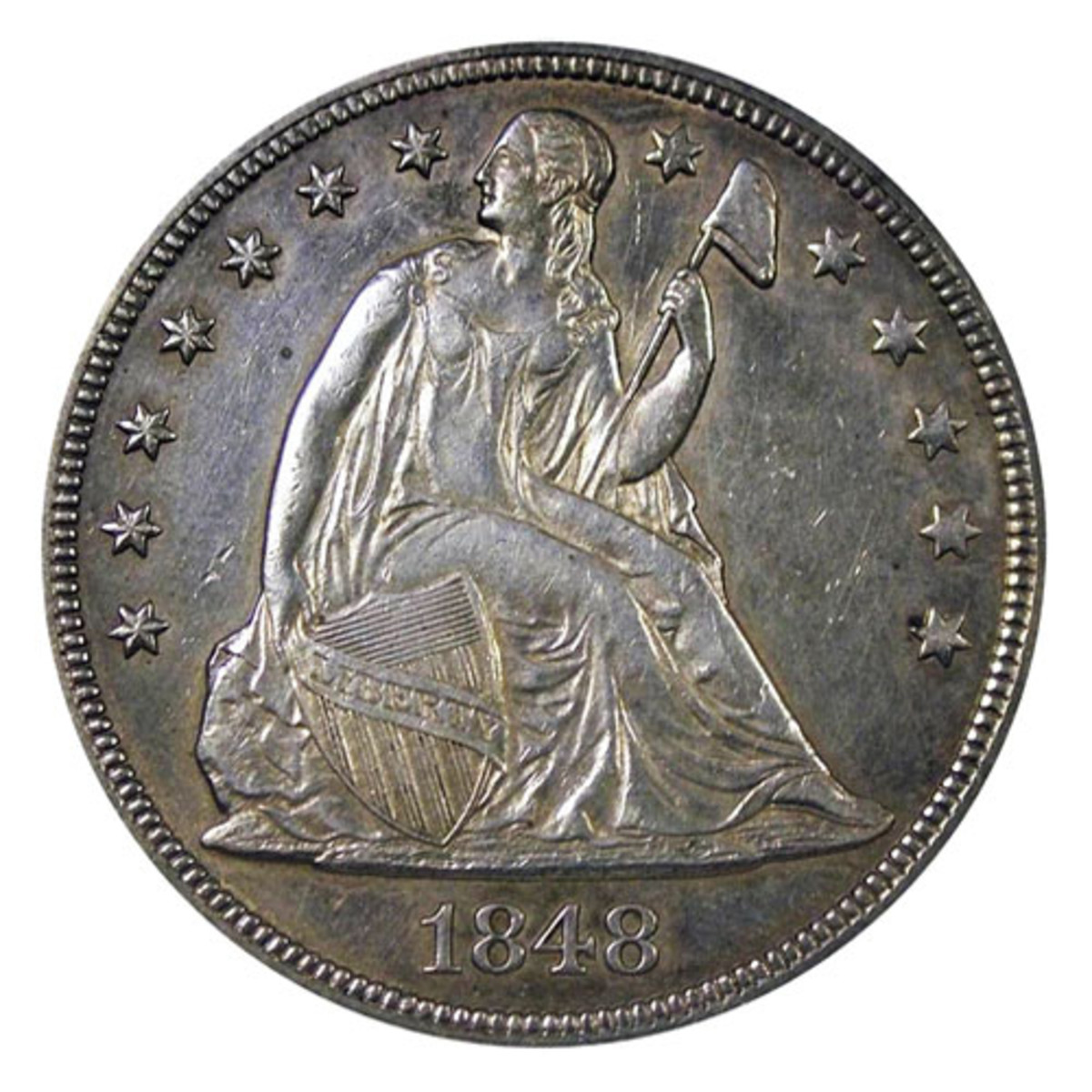1848 Seated Liberty Dollar – Numismatic News
It’s pretty hard to believe that United States silver dollars could exist. Morgan dollars receive so much attention that it seems every numismatic publication has something about silver dollars, but very few have anything about Seated Liberty dollars. This is unfortunate as in many cases Seated Liberty Dollars are great values for coins that are much harder and more interesting than most realize.
It must be remembered that the Seated Liberty Dollar was alien to many Americans. There had been no actual silver dollar production since 1804, and by the time the first Seated Liberty silver dollar was produced in 1840, an entire generation of Americans had managed to live their entire lives without or using silver dollars. This seems hard to believe for a period in the first half of the 19th century, but it is true.
The early Seated Liberty silver dollars had fairly heavy coinage. 1840 was over 61,000, and the 1841, 1842 and 1843 were all over 100,000, but apparently someone noticed at the time that the manufactured Seated Liberty Dollars were not circulating very actively.
In fact, there is reason to believe that the manufactured silver dollars were hardly in circulation. After all, decades without silver dollars will mean that people don’t think much about using them. That seems to have happened, as there is some evidence that they were basically used as novelty gifts and reserves.
By 1844, the number of coins was significantly reduced and reached a new low point in 1848. The silver dollar reached just 15,000 this year. A few years later there would be even lower totals, but that was a different time. Back then, silver coins were hoarded. However, in 1848 circulation was low simply because the coins were not needed.
It would be equally fair to say that collectors of 1848 and other Seated Liberty dollars didn’t save much. After all, a dollar was still way too much money for most people to spend on coins. Additionally, given silver dollars’ rather patchy track record, there is reason to believe that most would not have been overly confident that the coins they collected would even be issued on a regular basis.
In addition, 1848 was a special time of change. It was around this time that gold was discovered in California, which would change things dramatically: the silver dollar in circulation would take its place with the gold dollar.
The gold discovery would force a reduction in silver in all silver issues except the silver dollar, and the silver dollar’s role was essentially to be exported. This could also have been true for the 1848 if it could still be found. Although, like many other silver issues before silver was reduced in coinage in 1853, the 1848 dollar may have melted in some numbers as well. We can’t be sure, but surely the 1848 should be as robust as its 15,000 mintage would suggest.
That said, in G-4 the 1848 is listed for $350 and that has to be considered great value as it’s only available because the problem is overlooked. It’s $6,600 in MS-60 and $12,000 in MS-63.
At the Numismatic Guaranty Company (NGC) they saw the 1848 at Mint State a total of 11 times, but none was better than the MS-63. At the Professional Coin Grading Service (PCGS), they’ve seen the 1848 21 times in Mint State. A single MS-66 was the best, while no other was better than MS-63. To be fair, there is some evidence with NGC Report 10 and PCGS 15. They could be an option, although still not an easy or cheap one.
Realistically the 1848 in G-4 is a big value and the same goes for MS-60. At $6,600, when you consider that NGC and PCGS combined have only graded 32, you have to assume that you’re getting very solid value, as the 1848 is a very hard coin lacking only one thing: recognition.


Comments are closed.